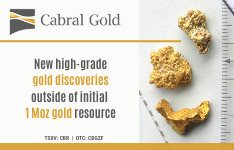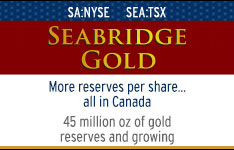
The fundamental reasons for silver's advance are many, including the reintroduction of quantitative easing by the Fed (QE2), and the general loss of faith in the traditional major currencies. The following chart shows silver against the Australian and Canadian dollars.

Both Australia and Canada are natural resource-rich countries, and their currencies tend to move with commodity prices. The chart shows that after a few false breakouts, silver, the Australian dollar and the Canadian dollar are finally breaking out at the same time. As the world continues to lose confidence in the growth rates of the U.S., Eurozone, Great Britain and Japan, investors are increasingly seeking out countries like Australia and Canada to store their cash.
Given the U.S. and other developed economies' need to print money to support risk assets in the absence of real economic recovery, currencies like the AUD and CAD should continue to outperform.
Along with resource currencies, silver and gold will also outperform. Just as the resource currencies are an attractive place for investors to store value, precious metals have traditionally been a hedge against inflation and major currency devaluation. With the Fed's penchant for printing money and keeping government bond yields artificially low, investors will have to continue to purchase precious metals in order to hedge their portfolios against possible inflation.
While the current trajectory of silver makes a short-term pullback likely, the long-term prospects of the metal continue to be strong. We will continue to be long silver, and add to our position on pullbacks.


















































